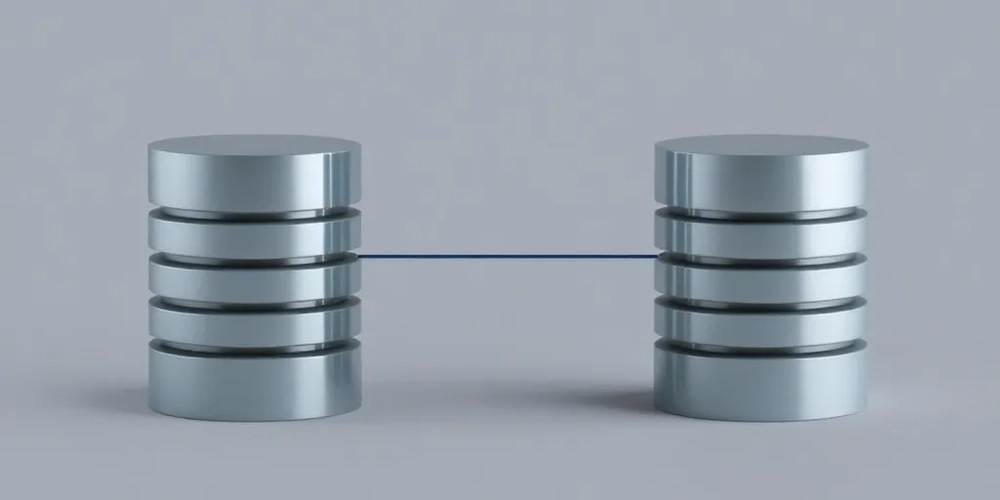Mastering Database Consistency: Unlocking the 'C' in ACID with PostgreSQL
Introduction In the last article, I talked about atomicity in databases. As you know, I’m doing a deep-dive series on ACID in databases, and now it's time to tackle the C—Consistency. As always, I’ll use PostgreSQL for demonstration, but with minor changes, this applies to almost all traditional relational databases. Consistency means that when a transaction runs—which is just a group of operations—the state of the database remains valid both before and after the transaction. This includes ensuring that constraints like UNIQUE, NOT NULL, CHECK, and foreign key rules are upheld. If a transaction would violate these rules, it’s rolled back automatically. Let's deep dive into: Real-World Consistency: The E-commerce Platform Consistency Through Relationships (Cascade Operations) Write-Ahead Logging Explained Consistency Difference from CAP Theorem Conclusion Real-World Consistency: The E-commerce Platform Let’s say you’re building an e-commerce platform. In a typical order transaction, several operations happen together: Reducing stock Creating the order Sending notifications These operations must respect all business rules and constraints before being committed. If, for example, the stock level drops below zero or the order cannot be created due to a constraint violation, the entire transaction is rolled back. This is where consistency from the ACID principles ensures that your database remains in a valid state — no partial or inconsistent data gets committed. For instance, stock should never go below zero. To enforce that, you might add a constraint: ALTER TABLE products ADD CONSTRAINT stock_positive CHECK (stock >= 0); Now imagine during a transaction, a customer places an order for more items than are available. If the constraint fails but the order still gets created — your database is not consistent, and thus not ACID compliant. Consistency ensures that all business rules, constraints, and dependencies are respected before a transaction is committed. It keeps your data clean and trustworthy. Consistency Through Relationships (Cascade Operations) But consistency doesn’t stop at just field-level checks. It also involves maintaining referential integrity across related tables. Imagine your database has a users table and an orders table, where each order belongs to a user: CREATE TABLE users ( id SERIAL PRIMARY KEY, name TEXT NOT NULL ); CREATE TABLE orders ( id SERIAL PRIMARY KEY, user_id INTEGER REFERENCES users(id) ON DELETE CASCADE ); If a user is deleted, all of their orders should be deleted too. PostgreSQL handles this via cascading operations, which are processed synchronously as part of the same transaction — helping maintain consistency across tables. However, some large-scale systems offload these cascading deletions to background jobs or asynchronous triggers. While this may improve performance, it introduces risk: if the job fails or runs late, and another transaction reads the data that should have been deleted, your system may act on stale or invalid data. This leads to a consistency problem — not because of the database engine itself, but due to how the application is designed. How PostgreSQL Enforces Consistency Internally To enforce this kind of consistency — both in constraints and in relational integrity — PostgreSQL relies on a mechanism called the WAL (Write-Ahead Log), which I discussed in detail in the previous article on Atomicity. Whenever a transaction begins, every operation — whether it’s a new insert, a cascading delete from a foreign key relationship, or a column update — is first written to the WAL before it modifies the actual data in your tables. This ensures that no partial or invalid state ever reaches the persistent database. If something fails (like a constraint violation or a cascading issue), PostgreSQL can safely roll back using the WAL, guaranteeing that the data remains consistent and valid throughout the system. Here’s a high-level look: BEGIN TRANSACTION → Write operation to WAL (INSERT, DELETE, UPDATE) → Validate constraints (CHECK, UNIQUE, FK, NOT NULL) → If everything is valid: COMMIT → Else: ROLLBACK (discard uncommitted WAL entries) So even in complex operations like deleting a user and all their orders via ON DELETE CASCADE, all changes are recorded in WAL first. If anything fails, the entire chain — including the dependent deletions — is rolled back, and your data remains untouched and valid. This is how PostgreSQL ensures relational consistency — even deep across table relationships — at the transaction level. Consistency Difference from CAP Theorem Many people confuse CAP Theorem consistency with ACID consistency, but they refer to different things. CAP consistency applies to distributed systems where data is replicated across multiple nodes. It means that every node must reflect the most recent write, or return an error

Introduction
In the last article, I talked about atomicity in databases. As you know, I’m doing a deep-dive series on ACID in databases, and now it's time to tackle the C—Consistency.
As always, I’ll use PostgreSQL for demonstration, but with minor changes, this applies to almost all traditional relational databases.
Consistency means that when a transaction runs—which is just a group of operations—the state of the database remains valid both before and after the transaction. This includes ensuring that constraints like UNIQUE, NOT NULL, CHECK, and foreign key rules are upheld. If a transaction would violate these rules, it’s rolled back automatically.
Let's deep dive into:
- Real-World Consistency: The E-commerce Platform
- Consistency Through Relationships (Cascade Operations)
- Write-Ahead Logging Explained
- Consistency Difference from CAP Theorem
- Conclusion
Real-World Consistency: The E-commerce Platform
Let’s say you’re building an e-commerce platform. In a typical order transaction, several operations happen together:
Reducing stock
Creating the order
Sending notifications
These operations must respect all business rules and constraints before being committed. If, for example, the stock level drops below zero or the order cannot be created due to a constraint violation, the entire transaction is rolled back. This is where consistency from the ACID principles ensures that your database remains in a valid state — no partial or inconsistent data gets committed.
For instance, stock should never go below zero. To enforce that, you might add a constraint:
ALTER TABLE products
ADD CONSTRAINT stock_positive CHECK (stock >= 0);
Now imagine during a transaction, a customer places an order for more items than are available. If the constraint fails but the order still gets created — your database is not consistent, and thus not ACID compliant.
Consistency ensures that all business rules, constraints, and dependencies are respected before a transaction is committed. It keeps your data clean and trustworthy.
Consistency Through Relationships (Cascade Operations)
But consistency doesn’t stop at just field-level checks. It also involves maintaining referential integrity across related tables.
Imagine your database has a users table and an orders table, where each order belongs to a user:
CREATE TABLE users (
id SERIAL PRIMARY KEY,
name TEXT NOT NULL
);
CREATE TABLE orders (
id SERIAL PRIMARY KEY,
user_id INTEGER REFERENCES users(id) ON DELETE CASCADE
);
If a user is deleted, all of their orders should be deleted too. PostgreSQL handles this via cascading operations, which are processed synchronously as part of the same transaction — helping maintain consistency across tables.
However, some large-scale systems offload these cascading deletions to background jobs or asynchronous triggers. While this may improve performance, it introduces risk: if the job fails or runs late, and another transaction reads the data that should have been deleted, your system may act on stale or invalid data.
This leads to a consistency problem — not because of the database engine itself, but due to how the application is designed.
How PostgreSQL Enforces Consistency Internally
To enforce this kind of consistency — both in constraints and in relational integrity — PostgreSQL relies on a mechanism called the WAL (Write-Ahead Log), which I discussed in detail in the previous article on Atomicity.
Whenever a transaction begins, every operation — whether it’s a new insert, a cascading delete from a foreign key relationship, or a column update — is first written to the WAL before it modifies the actual data in your tables.
This ensures that no partial or invalid state ever reaches the persistent database. If something fails (like a constraint violation or a cascading issue), PostgreSQL can safely roll back using the WAL, guaranteeing that the data remains consistent and valid throughout the system.
Here’s a high-level look:
BEGIN TRANSACTION
→ Write operation to WAL (INSERT, DELETE, UPDATE)
→ Validate constraints (CHECK, UNIQUE, FK, NOT NULL)
→ If everything is valid: COMMIT
→ Else: ROLLBACK (discard uncommitted WAL entries)
So even in complex operations like deleting a user and all their orders via ON DELETE CASCADE, all changes are recorded in WAL first. If anything fails, the entire chain — including the dependent deletions — is rolled back, and your data remains untouched and valid.
This is how PostgreSQL ensures relational consistency — even deep across table relationships — at the transaction level.
Consistency Difference from CAP Theorem
Many people confuse CAP Theorem consistency with ACID consistency, but they refer to different things.
CAP consistency applies to distributed systems where data is replicated across multiple nodes. It means that every node must reflect the most recent write, or return an error if it cannot.
For example, if a user writes data to Node A, and another user reads that data immediately from Node B, CAP consistency guarantees that Node B either returns the updated value or fails to respond if the update hasn't reached it yet.
This differs from eventual consistency, where Node B may return outdated (stale) data while it catches up — but eventually, all nodes will synchronize.
Each model has trade-offs: CAP consistency favors correctness, while eventual consistency favors availability and scalability.
So CAP consistency is about all replicas agreeing on the same value while ACID consistency is about maintaining data integrity within a single database instance.
Conclusion
Consistency is not just about applying rules—it’s about ensuring your business logic, data integrity, and user trust remain intact, even when the system is under load.
From constraint checking to WAL logging to concurrency control, PostgreSQL has your back. And if you’re building critical apps—like an e-commerce platform—you should care deeply about this stuff.
Before I end this post, I want to take a moment to express my deep love and unwavering support for our Palestinian Muslim brothers and sisters










![From fast food worker to cybersecurity engineer with Tae'lur Alexis [Podcast #169]](https://cdn.hashnode.com/res/hashnode/image/upload/v1745242807605/8a6cf71c-144f-4c91-9532-62d7c92c0f65.png?#)






























































